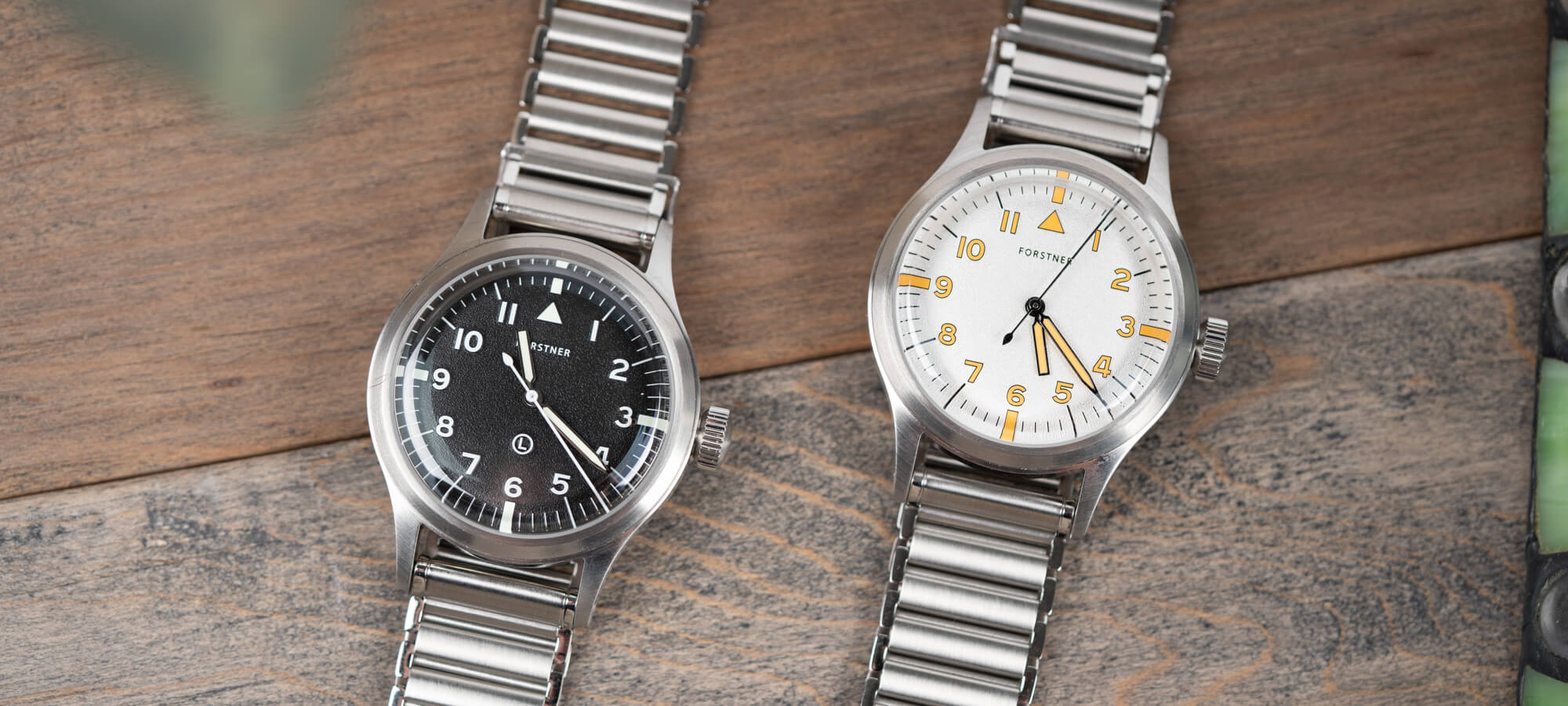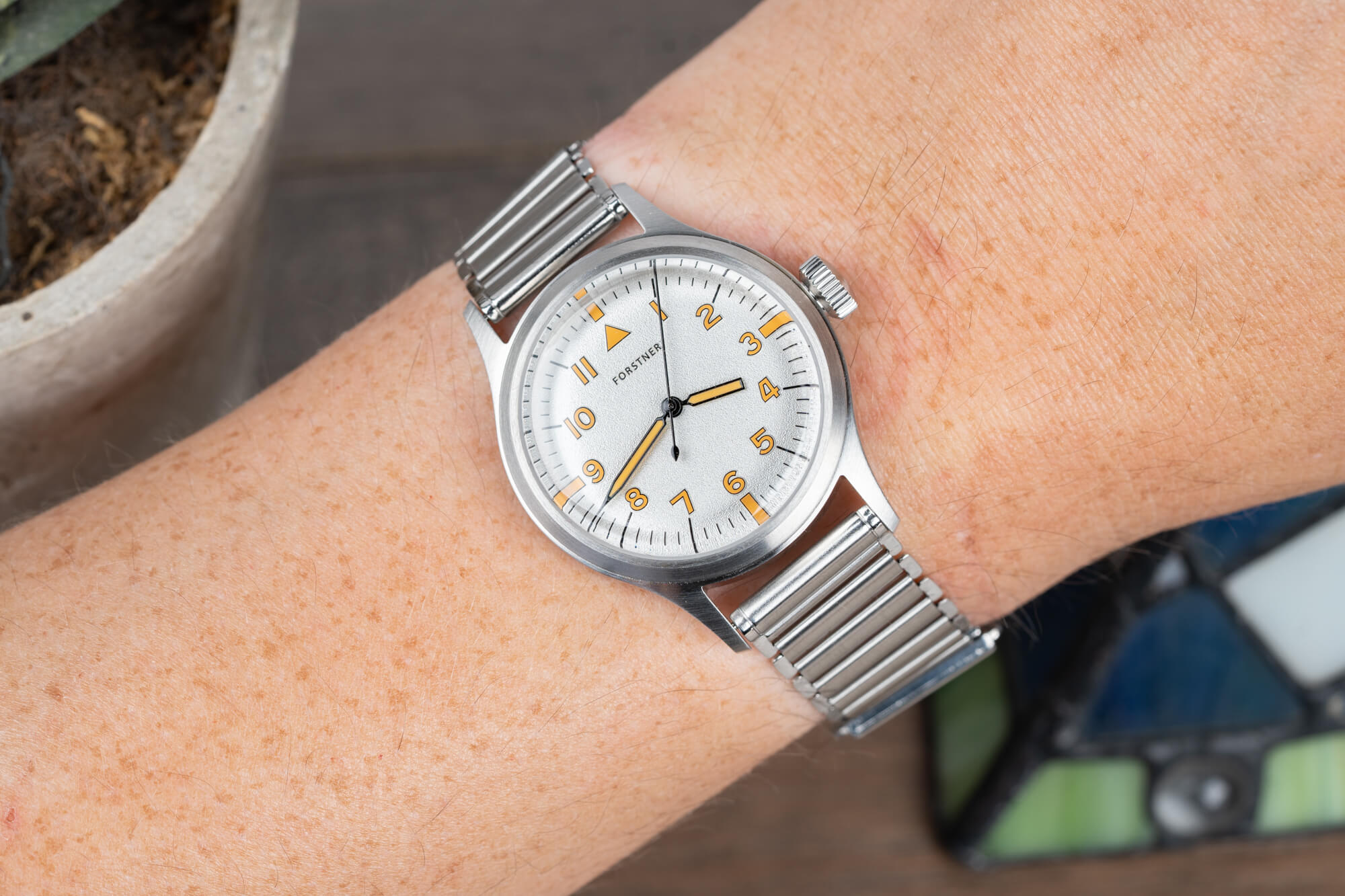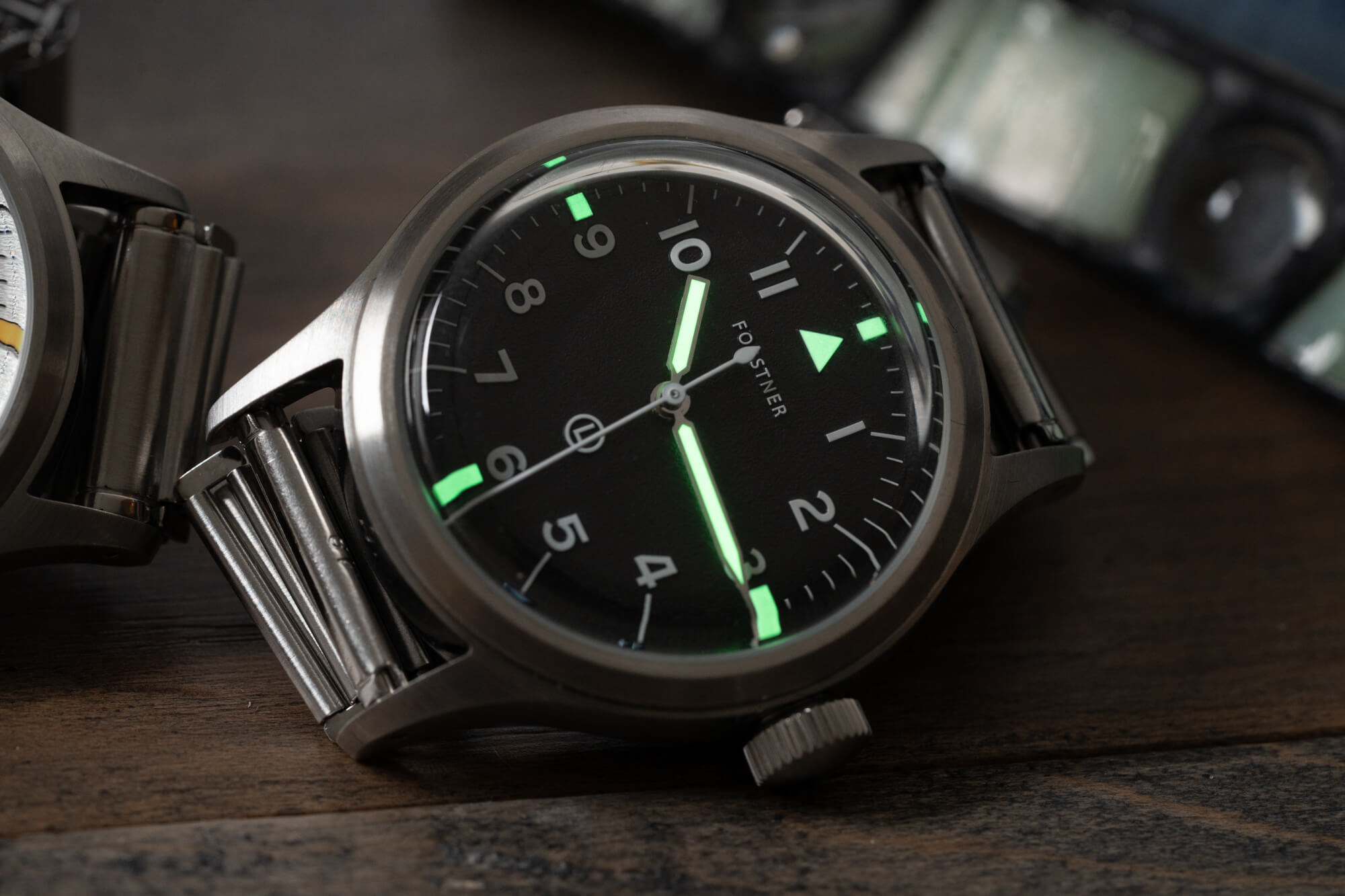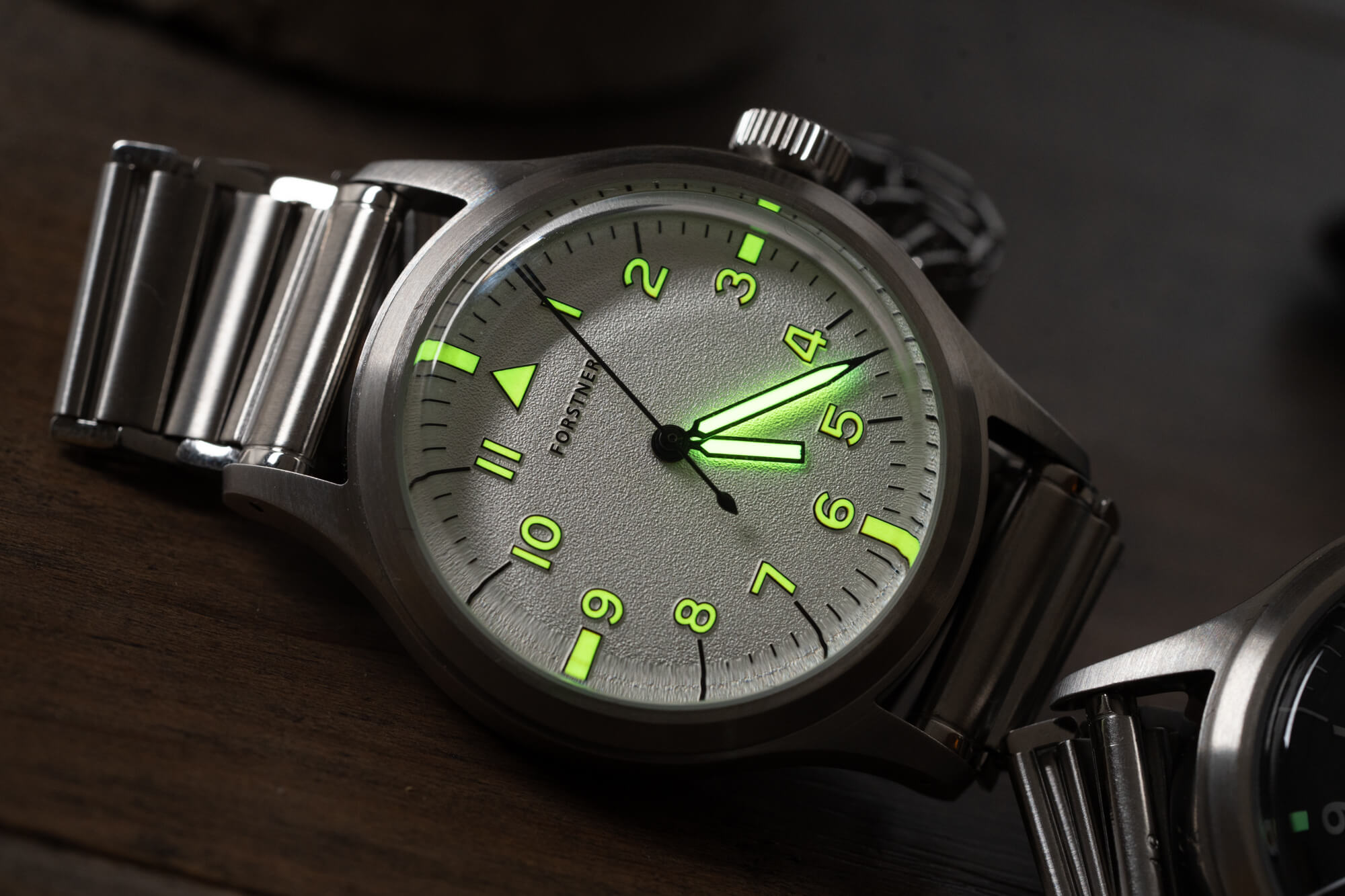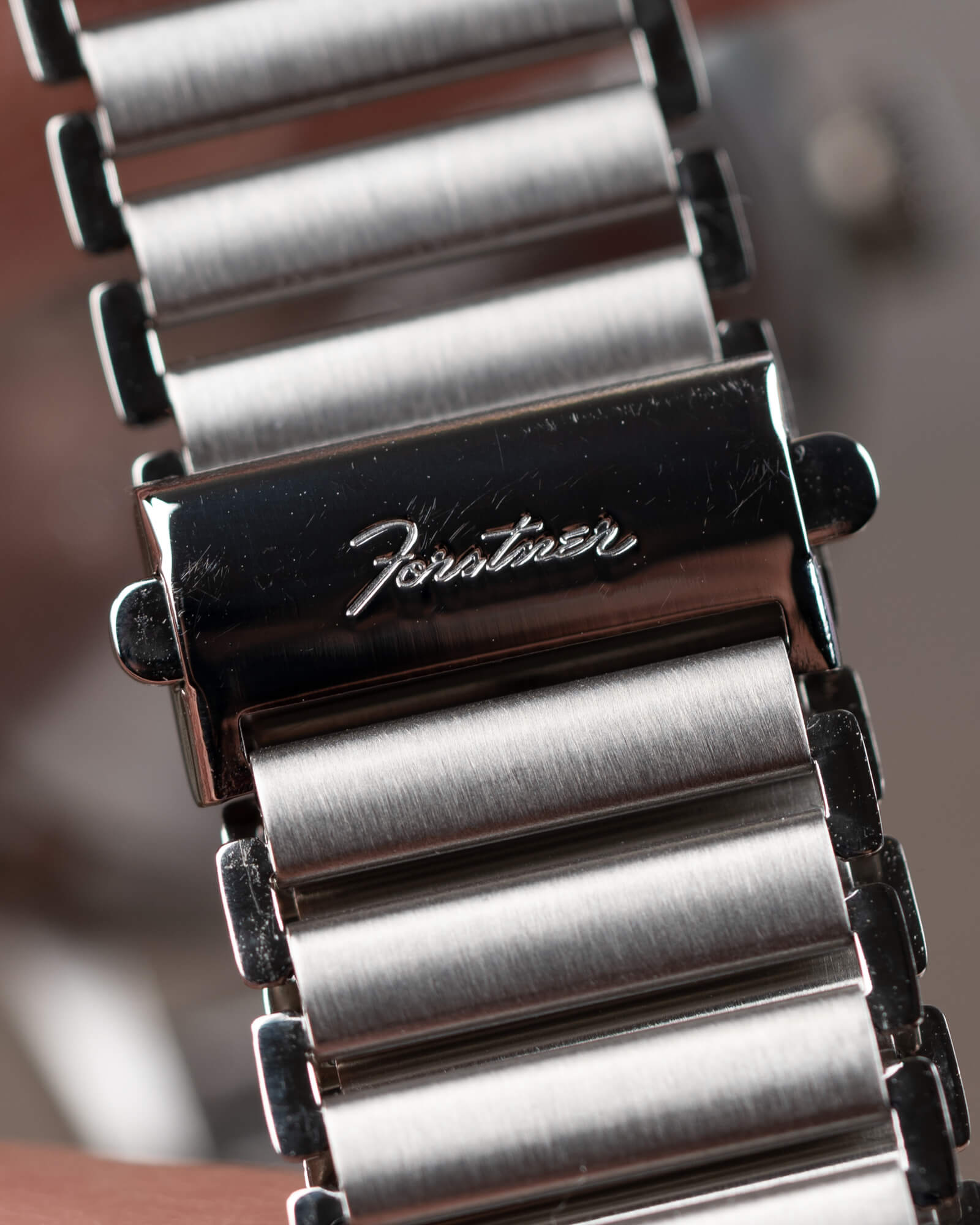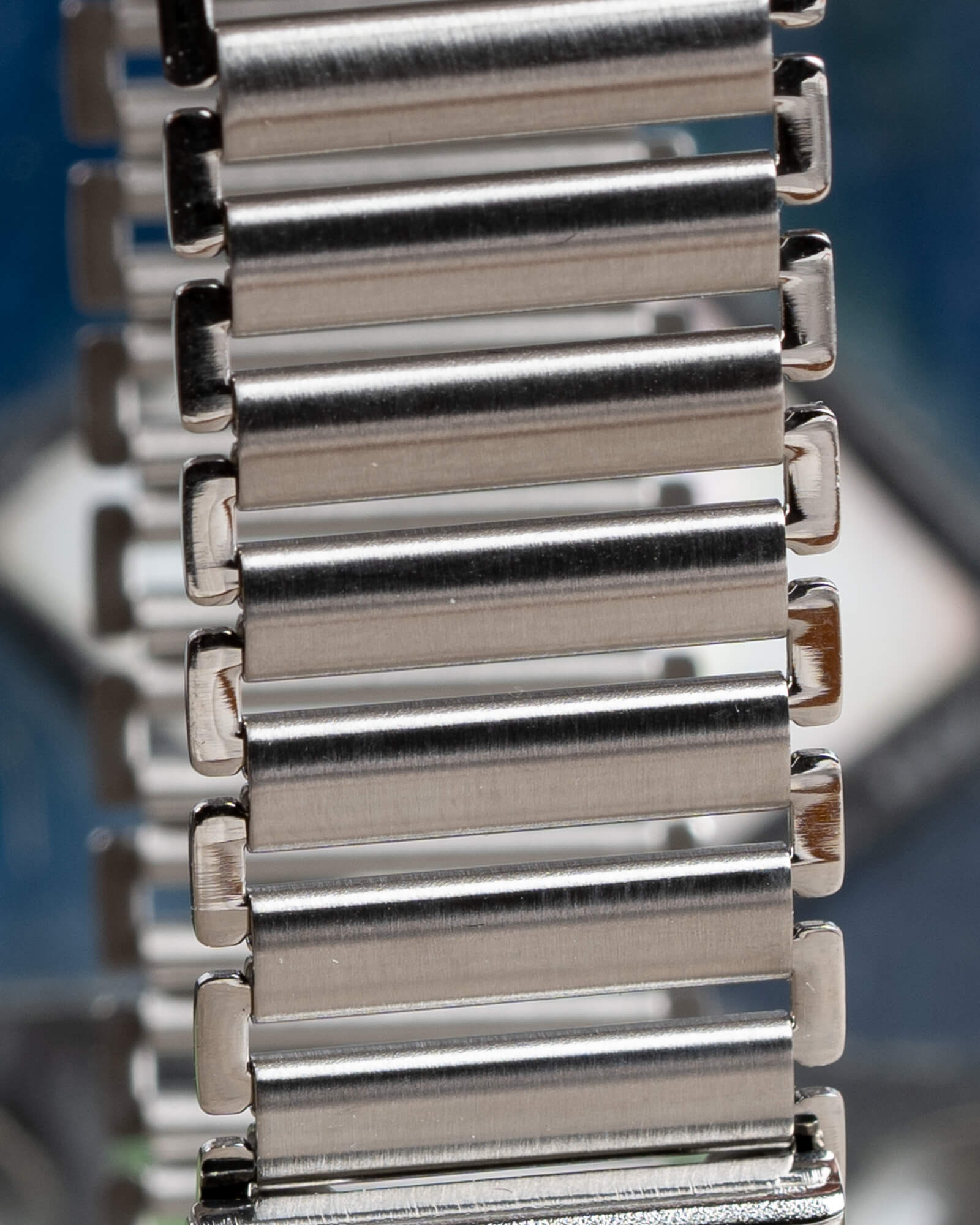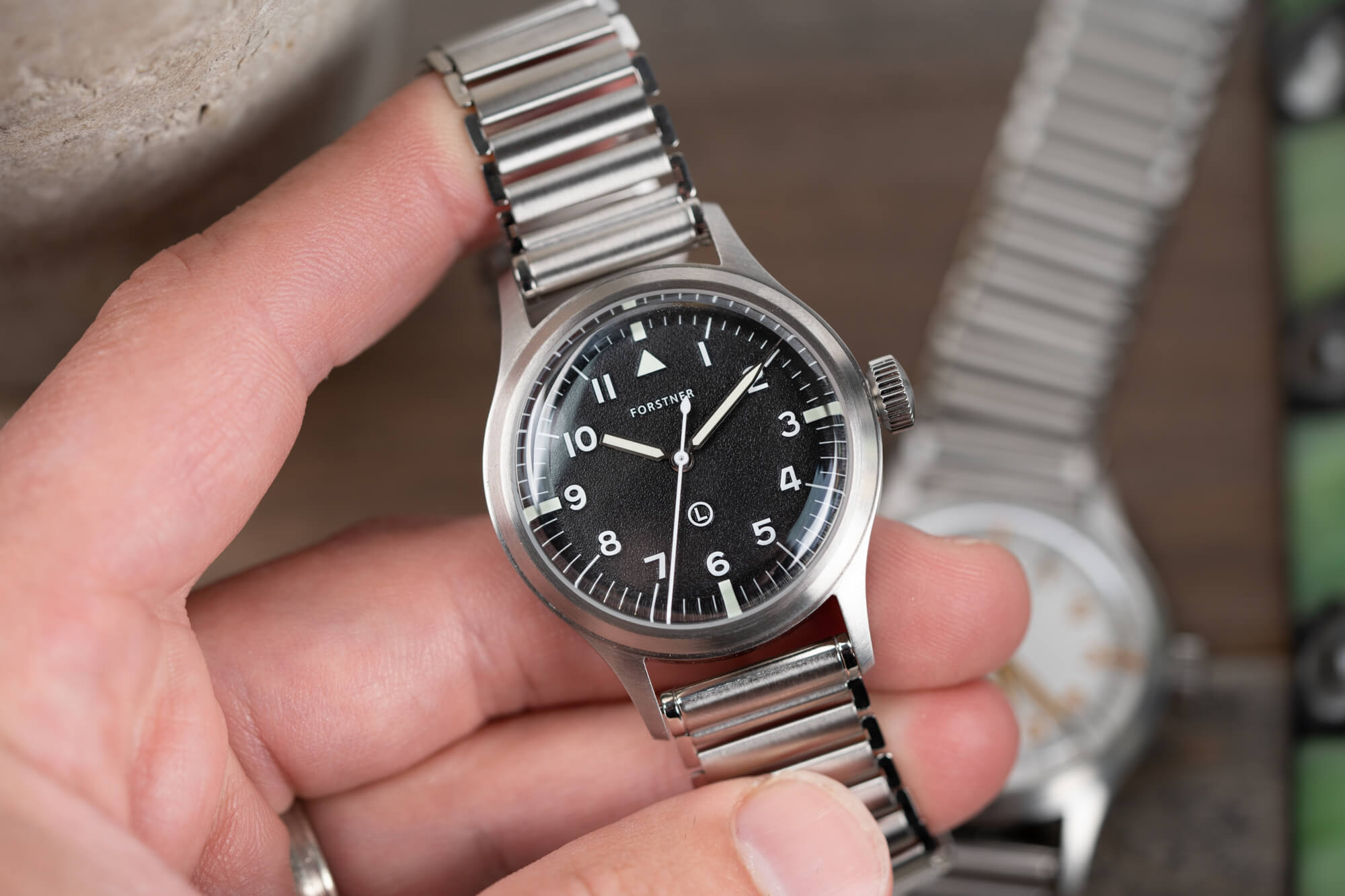 Sponsored post presented on aBlogtoWatch for advertiser.
Sponsored post presented on aBlogtoWatch for advertiser.
Long beloved for its exceptional vintage-styled watch bracelets, Forstner Bands has stepped into the business of making watches. Bringing the same fastidious passion as it does to its bracelets, Forstner has created a faithful iteration of a classic military timepiece with modern improvements. The second model released by the brand after its spot-on interpretation of the A-12, the Forstner Pilot Ref. F-6B/346, is exactly what you might expect from the company: a historically accurate recreation executed perfectly. Of course, it wouldn’t be a Forstner without one of the brand’s amazing bracelets.
The Forstner Pilot Ref. F-6B/346 gets its design and its name from the Mark 11 pilot’s watch, which was based on specs issued by the British Ministry of Defense a few years after World War II came to an end. (The 6B/346 designation comes from the “The Vocabulary of Royal Airforce Equipment: AP1086, Book 7, Section 6B” lists all Aircraft Navigation Equipment and Accessories.) The Air Ministry sought to improve upon the American A-11 spec that it had used for the RAF 6B/234 watches, seeking “a highly accurate time-piece, suitable for astro navigation purposes.” In addition to the litany of specs common to military watches of the day, it was stipulated that the watch must meet chronometer standards (specifically, it needed to run for at least 36 hours with a daily variance of no more than 4 seconds per day) and be anti-magnetic. On top of that, each watch underwent 44 days of chronometric testing at the Royal Greenwich Observatory and thereafter was to be serviced every year. The result was one of the finest military-grade watches ever produced and it fell to IWC and Jaeger-LeCoultre to produce them, with the former delivering about 8,000 and the latter delivering just under 3,000 (Longines made a few hundred prototypes, but they were never put into production or issued). Ultimately, the watches were worn by RAF navigators and used in conjunction with a bubble sextant to determine the exact location of an aircraft.
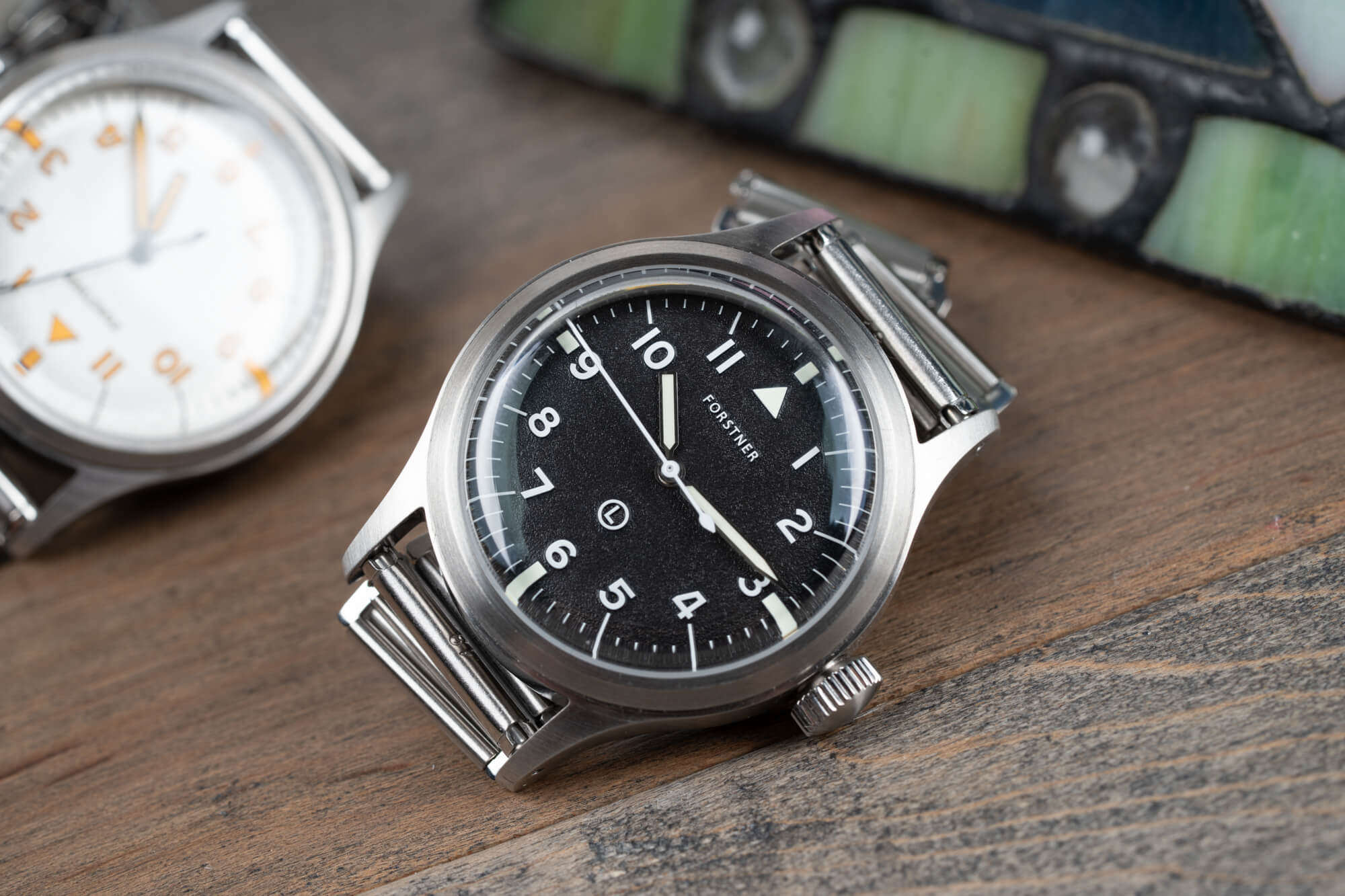 The Pilot Ref. F-6B/346 is offered by Forstner in two dials. The first is a true-to-spec recreation of the original 6B/346s, featuring a matte-black dial with white markings and unlumed numerals (the original spec designated that only the four cardinal markers be lumed). The truncated hour hand, solid-white seconds hand (and its teardrop counterbalance), sans serif numerals, 12 o’clock triangle—this is the classic pilot watch, and exactly what you’d get if you had been issued one of the IWC or JLCs. The only real extra you get from the Forstner (aside from modern appurtenances and a much lower price tag) is the textured dial with slightly raised markers and text that adds just a touch of character to the sterility of the original.
The Pilot Ref. F-6B/346 is offered by Forstner in two dials. The first is a true-to-spec recreation of the original 6B/346s, featuring a matte-black dial with white markings and unlumed numerals (the original spec designated that only the four cardinal markers be lumed). The truncated hour hand, solid-white seconds hand (and its teardrop counterbalance), sans serif numerals, 12 o’clock triangle—this is the classic pilot watch, and exactly what you’d get if you had been issued one of the IWC or JLCs. The only real extra you get from the Forstner (aside from modern appurtenances and a much lower price tag) is the textured dial with slightly raised markers and text that adds just a touch of character to the sterility of the original.
The circled “L” on the black dial harkens back to the “T” that would’ve been placed to show that the luminant was made of tritium, not the more dangerous radium. The “L” simply refers to there being luminous material, in this case, C3 Super-LumiNova. Legibility was of key importance, and that remains true with Forstner’s take, where the white-on-black starkness allows for easy, quick reading of the time (and if you’ve got a bubble sextant, reliable determination of your whereabouts).
 Forstner wasn’t content to just create an accurate version of those old specs. It wanted to put its own spin on the iconic design and has done so with a bright matte-white dial with orange-tone markings surrounded by thin black borders that match the color scheme of the hands. There was no spec for a white dial with orange-tone markers, but the silvery luster to the grainy white and the pop provided by the orange give this version a little something extra without sacrificing the vintage charm of the original.
Forstner wasn’t content to just create an accurate version of those old specs. It wanted to put its own spin on the iconic design and has done so with a bright matte-white dial with orange-tone markings surrounded by thin black borders that match the color scheme of the hands. There was no spec for a white dial with orange-tone markers, but the silvery luster to the grainy white and the pop provided by the orange give this version a little something extra without sacrificing the vintage charm of the original.
The white dial omits this circled “L,” though its layout remains accurate, as not all 6B/346 models had this marking. While many vintage reissues rely on the dreaded “fauxtina” to convey their roots, the boldness of the orange is something different, a color chosen for its brightness and ability to contrast with the white dial. Despite diverging from the original 6B/346 spec, the white dial offers an exciting new interpretation of this military design.
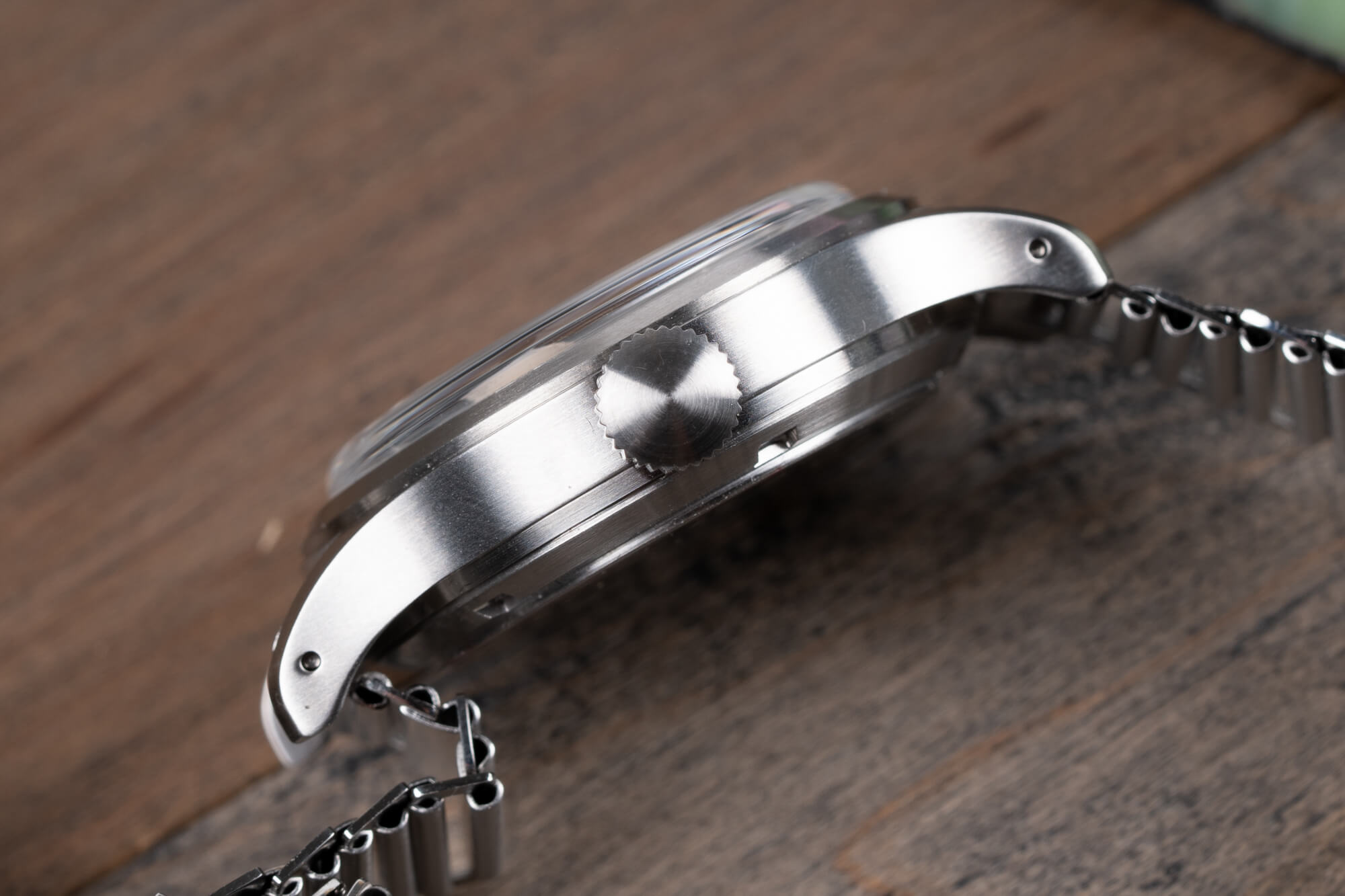
 With such an impressive track record in crafting bracelets, it will come as no surprise that Forstner has nailed the case of the Pilot Ref. F-6B/346. It’s easy to falter with a simple design, as any error stands out, but there are no such blunders to be found here; Forstner has recreated the 36mm case with only a few modern concessions. The stainless steel case has the same diameter but is a bit thicker than the originals, at 12.5mm. Fully brushed, it remains eminently wearable thanks to the long, curved lugs. The pull-out crown is perfectly sized and easy to operate, aiding in the watch’s 100m water resistance. Of particular note, Forstner has opted to use a domed sapphire crystal with anti-reflective coating on its underside, straying from historic examples in the name of durability and contemporary preferences.
With such an impressive track record in crafting bracelets, it will come as no surprise that Forstner has nailed the case of the Pilot Ref. F-6B/346. It’s easy to falter with a simple design, as any error stands out, but there are no such blunders to be found here; Forstner has recreated the 36mm case with only a few modern concessions. The stainless steel case has the same diameter but is a bit thicker than the originals, at 12.5mm. Fully brushed, it remains eminently wearable thanks to the long, curved lugs. The pull-out crown is perfectly sized and easy to operate, aiding in the watch’s 100m water resistance. Of particular note, Forstner has opted to use a domed sapphire crystal with anti-reflective coating on its underside, straying from historic examples in the name of durability and contemporary preferences.
The original 6B/346 spec provided that the watches be equipped with a “Bracelet, Bonklip 17.5mm width of clip. To be only fitted by The Royal Greenwich Observatory.” If you knew Forstner before this watch, you probably know that it was one of the makers of the original Bonklips and now offers a version in the form of its Klip bracelet. Designed to be secure, comfortable, and easily adjusted, Forstner has included the Klip on its Pilot Ref. F-6B/346, applying its historically accurate spec 6B/2763 markings on the case back, furthering its faithfulness to the original watches. The bracelet’s ladder design features satin brushed central links with thin polished connectors. To size it, one simply pulls the latch end until the bracelet is snug on the wrist, pushes the tabs in on the clasp, and hooks it in the gap between links. While most won’t have a need or desire to trade out the wonderfully comfortable Klip bracelet, doing so is a cinch thanks to the drilled lugs (not so on the originals, which had fixed bars).
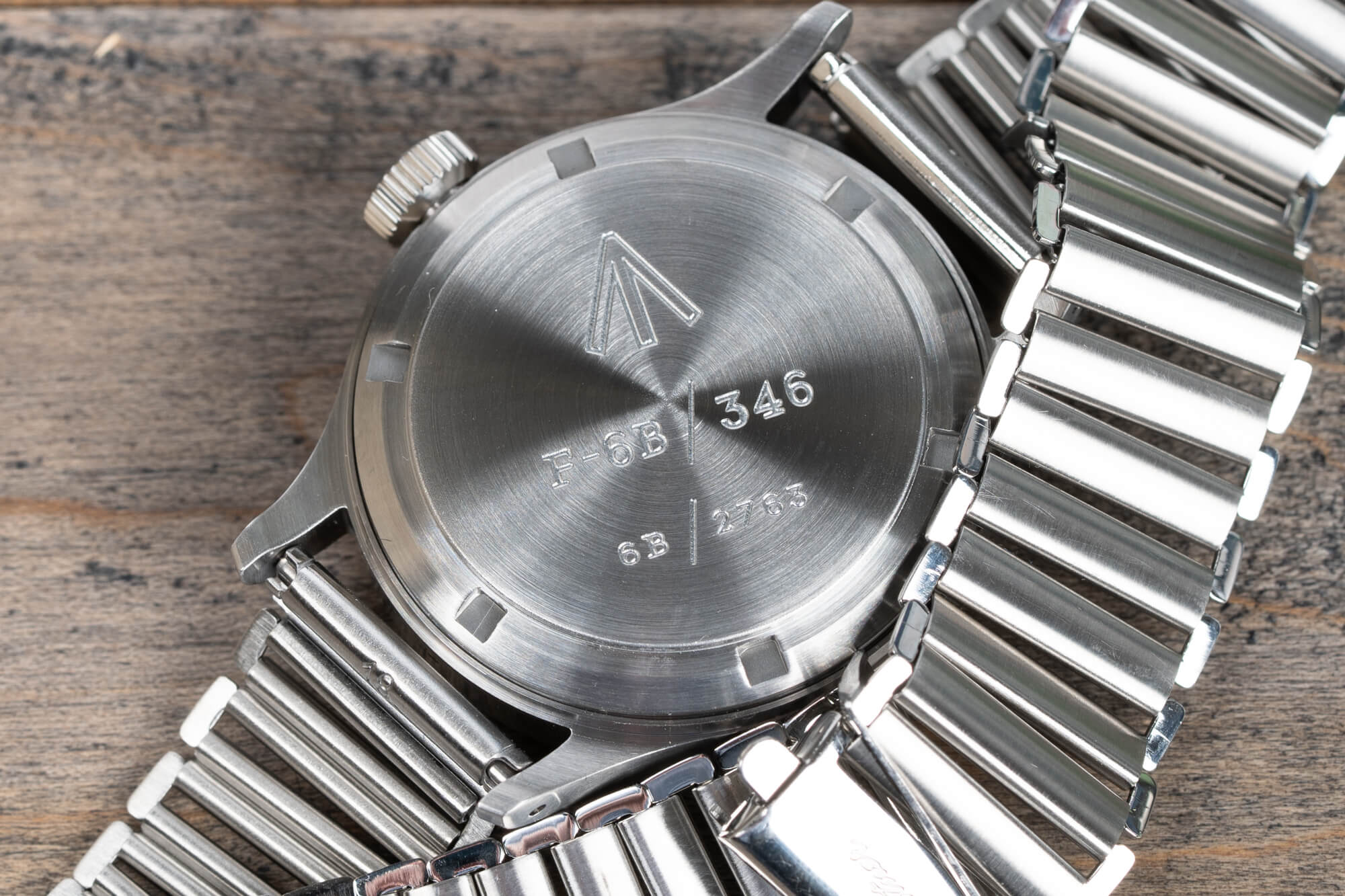 The most substantial change is the one you can’t see: Forstner has equipped the F-6B/346 with a modern hand-wound movement. The watch is powered by a Swiss Sellita SW210-1 elaborè grade manual winding movement, concealed by a screw-down caseback which features the same markings as would be found on the original, including the MOD broad arrow. The movement benefits from modern advancements and offers a 42-hour power reserve at 28,800 vph, with 19 jewels and hacking for precise setting. While not tested by The Royal Greenwich Observatory, the Sellita SW210-1 has more than proven its metal as a reliable timekeeper.
The most substantial change is the one you can’t see: Forstner has equipped the F-6B/346 with a modern hand-wound movement. The watch is powered by a Swiss Sellita SW210-1 elaborè grade manual winding movement, concealed by a screw-down caseback which features the same markings as would be found on the original, including the MOD broad arrow. The movement benefits from modern advancements and offers a 42-hour power reserve at 28,800 vph, with 19 jewels and hacking for precise setting. While not tested by The Royal Greenwich Observatory, the Sellita SW210-1 has more than proven its metal as a reliable timekeeper.
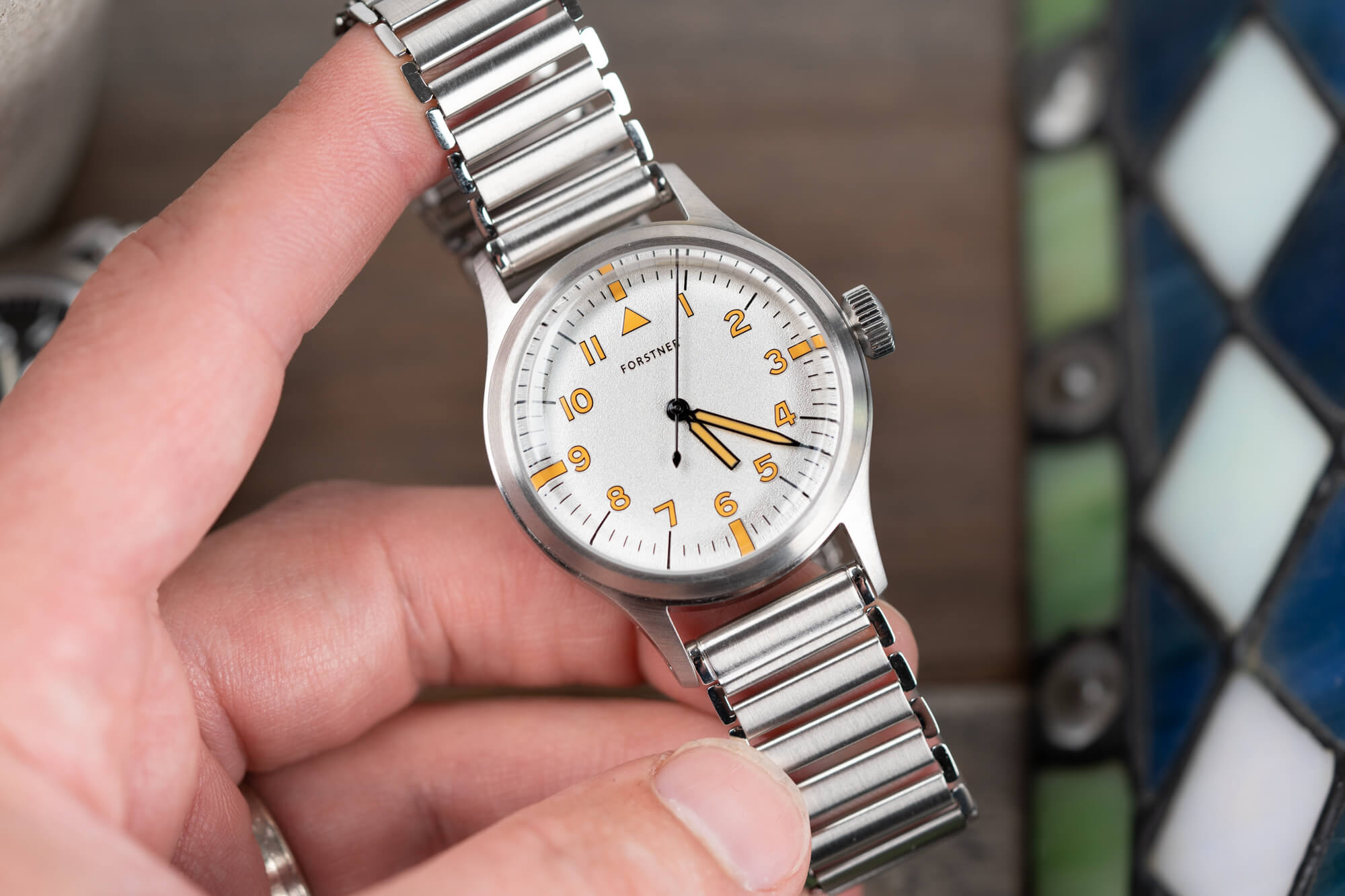
When accessories brands wade into the murky waters of making actual watches, it’s a natural response to be skeptical: Knowing how to make a good strap or bracelet is not the same thing as knowing how to make a good watch. Forstner, though, shows that when you bring the same meticulous care to a watch that you do to those accessories, the results can be exceptional. Given how thoughtful the brand has been in recreating some of the quirkiest vintage bracelets, perhaps it’s no wonder that it succeeded so thoroughly in bringing this classic MOD spec watch into the modern era. The Forstner Pilot Ref. F-6B/346 is priced at $850 USD and is currently available directly from Forstner. For more information, please visit the brand’s website.
Sponsored Posts are a form of advertising that allows sponsors to share useful news, messages, and offers to aBlogtoWatch readers in a way traditional display advertising is often not best suited to. All Sponsored Posts are subject to editorial guidelines with the intent that they offer readers useful news, promotions, or stories. The viewpoints and opinions expressed in Sponsored Posts are those of the advertiser and not necessarily those of aBlogtoWatch or its writers.
